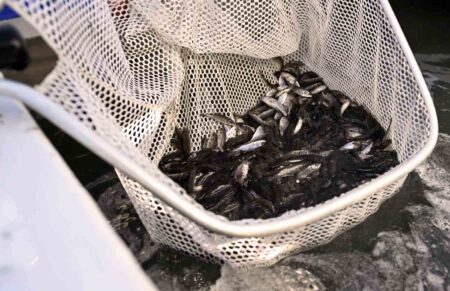I hope all you turkey hunters south of State Road 70 took a nice bird or two this year, as your season is coming to a close. For those of us in the rest of the state (excluding Holmes County), we still have until April 20 to bag a good long-beard. But once spring gobbler season is over, there’s really not much hunting to talk about, so I thought I’d write about another bird – one that could sure use our help, especially as Easter approaches.
Like the Osceola wild turkey, the Florida mottled duck has inhabited peninsular Florida for thousands of years. It is a valuable part of our state’s wildlife heritage and an important component of our wetlands ecosystem.
As Easter approaches, many parents may contemplate buying mallard ducklings for their children. After all, these fuzzy, little critters are so cute and cuddly and have been given as Easter presents for generations. But before people do that, they should consider all the facts and ramifications that can result from such a purchase – especially the negative effect on the native mottled duck.
Did you know mallard ducks can live up to 10 years? They might make nice pets while they’re still small enough to fit in your hand, but what happens when they become full-grown and the novelty wears off and the odor of the increased droppings left on your patio and outdoor furniture increases?
When this happens, parents and children alike often grow tired of caring for these pets and decide to turn them loose after they have outgrown their cages. Most people don’t realize, though, that this is against the law. Once released, mallards pose a serious threat to Florida’s native wildlife.
Besides prohibiting the releasing of mallards, Florida law also requires that anyone possessing, buying or selling mallard ducks have a permit from the Florida Fish and Wildlife Conservation Commission (FWC), and the birds must be kept in a cage.
One reason for this rule is these domesticated ducks are capable of transmitting diseases, and they compete with native wildlife for food and habitat. It’s actually illegal to release any animal into the wild if it poses a disease hazard. But the most important reason is releasing domesticated mallards into the wild threatens the existence of the Florida mottled duck.
The Florida mottled duck, also known as the Florida duck, is a unique subspecies, found only in peninsular Florida. This native Florida duck maintains a small home range compared to that of other waterfowl and inhabits both inland and coastal wetland ecosystems.
To us hunters, mottled ducks are a highly prized game bird found in many ponds, lakes, rivers, marshes and canals in central and south Florida. They’re large ducks, brownish in color, with both sexes being darker than a mallard but slightly lighter than a black duck.
This species is one of only a few nonmigratory ducks in North America. This means the mottled duck spends its entire life within Florida, unlike most ducks that migrate each year.
This nonmigratory nature is where the problem lies regarding released mallards. Wild mallards aren’t a problem because they’re migratory birds, inhabiting Florida only during the winter months. In the spring, wild mallards fly north to breed and are not present when the mottled duck mating season begins.
On the other hand, store-bought mallards are not wild but domesticated. When they’re released, they don’t migrate and instead become established, year-round residents of our state. These domesticated mallards are interbreeding with mottled ducks and producing crossbred offspring. The offspring are fertile, which compounds the situation so that each year there are fewer and fewer purebred mottled ducks left.
If it’s not stopped, this hybridization could result in the Florida mottled duck becoming extinct.
Communities around the globe already have witnessed several instances in which this has occurred. In New Zealand, domesticated mallards were released to provide hunting stock, and that devastated their local grey duck populations. Now, almost every grey duck in New Zealand is a crossbreed.
The Hawaiian duck is another example. This endangered bird has been all but completely hybridized on the island of Oahu and may be genetically intact only on the island of Kauai.
Meller’s duck in Madagascar is yet another. It too is now a highly endangered species because of the introduction of mallards into that country.
The fate of the Florida mottled duck could be similar, as its population is relatively small, estimated at only 30,000-50,000 breeding birds. FWC biologists are saying between 7 and 12 percent of the state’s mottled ducks are showing genetic evidence of hybridization.
To make matters worse, according to a survey by Florida State University, more than 12,000 mallards are purchased statewide from feed-and-seed stores and are potentially released each year. Given these alarming figures, plus the fact the population of mottled ducks is small, it’s easy to see how it wouldn’t take long for the Florida mottled duck to disappear.
To some, having Florida’s mottled duck become extinct may not be of much concern. To others, especially hunters and conservationists, who have an appreciation and love for nature, losing our mottled duck would be a great tragedy.
Today, the future of Florida’s mottled duck is uncertain. As Floridians and hunters, we hold the fate of the mottled duck in our hands.
What can people do to help prevent this species from going extinct? The solution starts with carefully weighing the ramifications of buying your child a mallard duck for Easter.
To go a step further, don’t feed or shelter domesticated mallards, help spread the word, and consider removing any that already may call your property home. You can get the proper permit from the FWC.
For more information on protecting Florida’s mottled duck or to obtain permits for removing domesticated mallards, contact one of the FWC’s waterfowl offices at 850-488-5878 or 321-726-2862, or visit the FWC’s waterfowl website at MyFWC.com/Duck.
Article by Tony Young
www.MyFWC.com
Enjoy fishing, hunting, hiking, kayaking and other outdoor sports and activities? Take a look at our OUTDOORS section, updated regularly with interesting and insightful articles.



